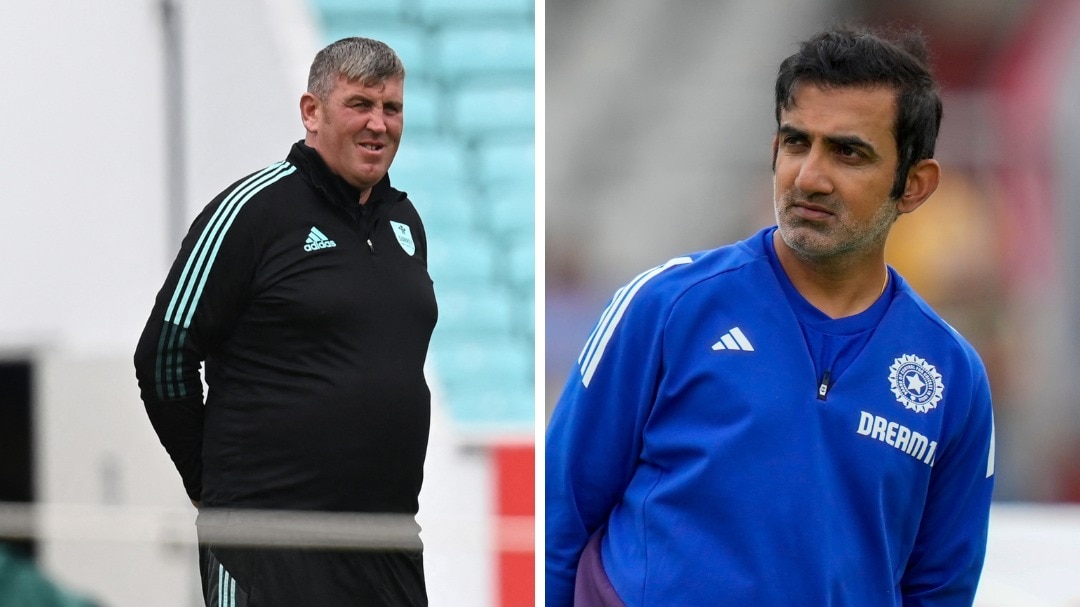 |
|
The clash between Gautam Gambhir, the Indian coach, and Lee Fortis, the Oval pitch curator, has ignited a debate regarding the conduct of individuals involved in high-stakes sporting events. The incident, which occurred in the lead-up to a crucial Test match between India and England, has drawn commentary from former cricketers like Matthew Hayden and Greg Blewett, who offered their perspectives on the matter. Hayden, a former Australian opener, acknowledged the tension inherent in preparing for an important match but suggested that Gambhir could have exercised greater restraint in his verbal exchange with Fortis. This highlights the delicate balance between asserting one's position and maintaining professional decorum, especially in the pressure-cooker environment of international cricket. The core issue revolves around Gambhir's dissatisfaction with Fortis's behavior, with reports suggesting that the curator had instructed the Indian team management to stay away from the pitch and had been less than accommodating to the backroom staff. This perceived lack of respect and cooperation seemingly triggered Gambhir's outburst, where he reportedly used expletives and asserted his authority over Fortis. However, the response itself became a point of contention, with critics arguing that Gambhir's language and demeanor were unbecoming of a coach representing the Indian national team.
Hayden's commentary, delivered on 'All Over Bar The Cricket,' pointed towards a perceived power dynamic often observed in English cricket venues, where grounds staff wield significant authority. He alluded to a potential 'flex' on Fortis's part, suggesting that the curator might have been deliberately making things difficult for the Indian team in the lead-up to the final Test match. This perspective casts Gambhir's actions in a slightly different light, framing them as a response to what he perceived as an attempt to undermine his team's preparations. However, Hayden emphasized that regardless of the provocation, Gambhir should have chosen his words more carefully. Greg Blewett, echoing Hayden's sentiments, concurred that Gambhir could have handled the situation with greater diplomacy. Blewett recounted his own experiences with similar restrictions placed on individuals approaching the pitch, even commentators without spikes, highlighting the potential for frustration. While acknowledging the underlying reasons for Gambhir's anger, Blewett underscored the importance of maintaining composure and professional conduct, particularly in a public setting. The controversy underscores the complex interplay of factors that can influence behavior in high-pressure sporting environments. The desire to protect one's team, the frustration of dealing with uncooperative individuals, and the inherent power dynamics within the sporting ecosystem can all contribute to situations where emotions run high and words are exchanged that might be later regretted.
Despite the pre-match drama, the Oval Test ultimately proved to be a thrilling encounter, with India securing a narrow six-run victory. The pitch, which had been a source of contention leading up to the match, offered significant assistance to the bowlers, contributing to a captivating contest. Ironically, Fortis, the target of Gambhir's ire, was transformed from a perceived 'villain' to a 'hero' in the eyes of Indian fans as the pitch he prepared played a crucial role in their team's triumph. This turn of events highlights the often unpredictable nature of sports, where pre-conceived notions and expectations can be swiftly overturned by the actual performance on the field. The incident serves as a reminder of the importance of emotional regulation and effective communication, particularly for individuals in leadership positions. While Gambhir's passion for his team is undeniable, his handling of the situation with Fortis has been criticized for lacking the composure and diplomacy expected of a coach representing a national team. The incident also raises broader questions about the relationship between team management and grounds staff, and the importance of fostering a collaborative and respectful environment to ensure optimal preparation for sporting events. In the aftermath of the Gambhir-Fortis feud, it is essential for all parties involved to reflect on their actions and learn from the experience. Promoting open communication, mutual respect, and a shared commitment to the success of the sport are crucial for preventing similar incidents from occurring in the future.
The long term implications of such incidents can be profound, affecting not only the individuals involved but also the reputation of the teams and organizations they represent. In a world of instant media coverage and social media scrutiny, even minor disagreements can quickly escalate into public controversies, damaging relationships and potentially impacting morale. Therefore, proactive measures to address conflict resolution and promote ethical conduct are essential for maintaining a positive and professional sporting environment. This includes providing training for coaches and team managers on effective communication strategies, conflict management techniques, and the importance of maintaining composure under pressure. It also involves fostering a culture of mutual respect between team management and grounds staff, recognizing the vital role that each plays in the success of sporting events. Furthermore, clear guidelines and protocols should be established to address grievances and resolve disputes in a fair and transparent manner. By creating a framework for open communication and constructive dialogue, organizations can prevent minor disagreements from escalating into public controversies and ensure that all parties involved are treated with dignity and respect. The Gambhir-Fortis incident serves as a valuable case study for examining the complexities of human interaction in the context of high-pressure sporting environments. By analyzing the factors that contributed to the conflict and identifying potential areas for improvement, organizations can take proactive steps to prevent similar incidents from occurring in the future and foster a more positive and productive sporting culture.
Source: Gambhir vs Oval curator: Hayden says India coach should have used better language
